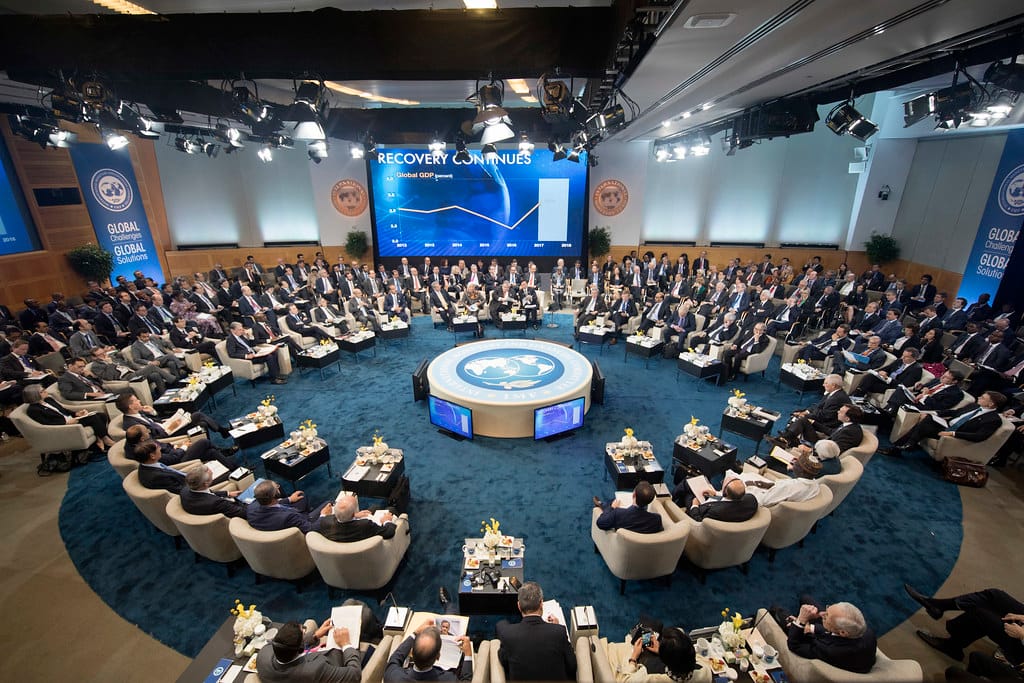IMF organisation established in year 1944s Bretton wood agreement in New Hampshire, USA. IMF (International Monetary Fund) basically helps to reduce poverty of its member countries. IMF has 191 member countries including USA, IMF maintain the sustainability and prosperity. As the USA is largest economy in the world and most largest contributor of IMF organization
IMF History
IMF was created in response to 1930s Great Depression of World War ll. The whole IMF framework was build by 44 countries and there dignitaries. Interestingly, Over the time now IMF has 191 member countries and India is founding member of IMF.
In early years IMF focuses on the economies safety and exchange rate stability. In 1971 the Breton wood agreement was collapsed and the end of fixed exchange rate was stopped, allowing each country to choose there exchange rate.
In 1971, the Oil shocks occurred which leads a global debt crisis or international debt crisis. IMF rescued many countries from this recession.
Now, IMF is intergovernmental organisation which maintain the stability of global economy and the IMF headquarter is in the Washington, D.C. Harry Dexter White the chief international economist at US Treasury from the year 1942-1944, The harry dexter white is founder of IMF (International Monetary Fund).
How IMF Works
IMF able to lend 1 trillion to its member countries. IMF works in 3 Fosters to stabilise international economic health.
IMF Policy Advice
The IMF has taken the responsibility of its member countries to monitor there economy and give them Policy advice accordingly, and its actively known as surveillance. Not only global but IMF also advice to regional level to adjust the policy by doing the appropriate research.
IMF Financial Assistance
IMF helps the countries by hit economic crisis and provide a breathing room to reset economic stability. Basically, IMF provides the precautionary advice to countries.
The crisis is occurred by to factors:
- Domestic Factor –
- External Factor –
Domestic Factor
In domestic factor include the inappropriate fiscal deficit, high public loans this leads a loss of credibility of country which drastically reduces the country reserve. Political instability make big impact on country economy.
External Factor
The most common causes is natural disaster which leads an high drastic swing in commodity market of country. This can make the sudden change in capital volatility.
The COVID-19 is an example of external factor disaster which causes a very high volume of loss In economy for many countries.
IMF Capacity Development
Capacity Development is one of the core function of IMF which provides technical assistance and training to its member countries. Capacity development can help countries to collect a taxes and bolster the public finances. It also helps to make decision, It also modernise exchange rate policies, development legal system.
Capacity Development helps countries in many ways:
- Public Finance
- Monetary and Financial Policies
- Macroeconomic Frameworks and Tools
- Legal Frameworks
- Statistics
- Inclusion and Inequality
- Climate Action
Public Finance
Public finances helps to maintain country reserve to build school, colleges, hospitals etc. this leads to improve country fiscal deficit.
Monetary and Financial Policies
Supervise the financial system and cyber risk including fin technologies. Monetary and financial policies works with central banks.
Macroeconomic Framework and Tools
This helps countries to improve their policy formulation, modelling tools and implementation.
Legal Frameworks
To fight with corruption, money laundering and inappropriate heavy transaction. Build legal governance over the country to stop this kind of activities.
Statistics
Track financial data and helps government to update policies. This gives more accurate and understandable data. It improves the countries foster economy.
Inclusion and Inequality
IMF helps countries to tackle with inequality by progressive taxation. It trains policymaker to make specific gender data to focus on economic policy for women.
Climate Action
IMF helps to countries which suffer from climate shocks and IMF give them best financial policies to reshape their country economy.
IMF Organisational Structure
Top of the Organisation – Board of governors (alternate governors to each country), All day to dat activity is track by 25 member executive board. IMF has its own 18 operational departments which carried out country, policy, analytical, and technical work.
